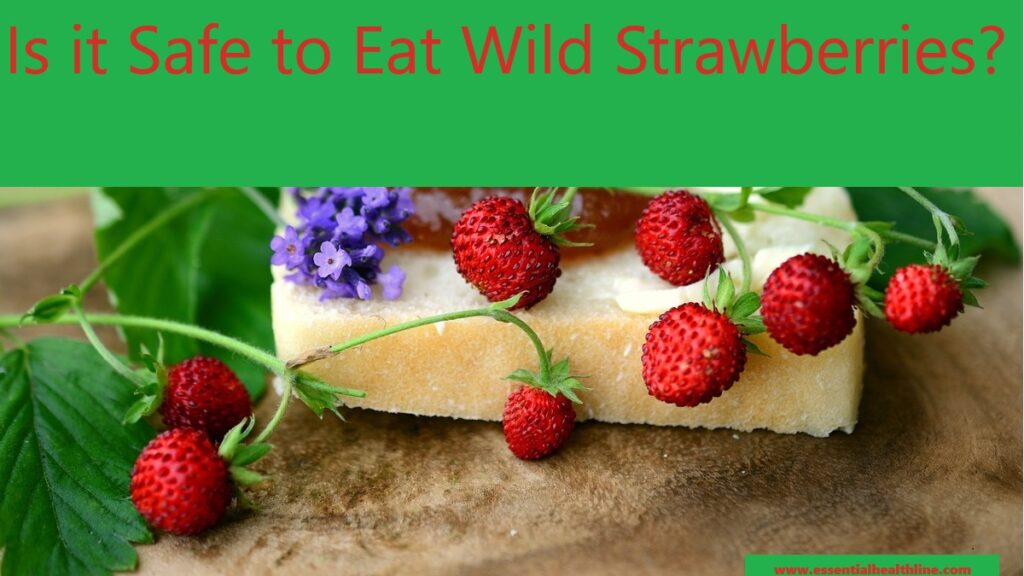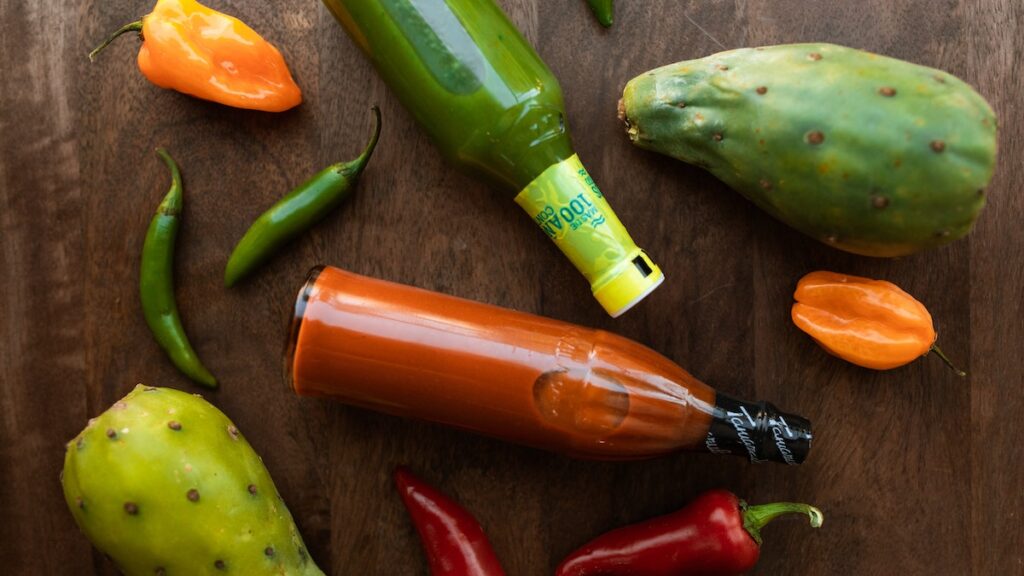Wild strawberries are some fruits you’ll come across in foraging efforts. Different people have varying opinions about the fruits’ edibility. For some reason, a good number believe this berry variety is harmful. Therefore, I find it vital to address this question profoundly: Are wild strawberries safe to eat?
Wild strawberries are safe to eat, delicious and nutritious, and an excellent source of vitamins B, C, and E. You can consume all parts of the wild strawberry plant, but people mostly eat the fruits. The main difference between them and the regular strawberries is the flavor.
So, what’s this fruit species? How do you identify it? What is its nutritional value? Any health benefits? How safe is it?
Keep reading!
What Are Wild Strawberries?
Wild strawberries or Fragaria vesca are strawberry types that grow in the natural environment.
They’re members of the rose family, loaded with nutrition and sweet flavor. Other names referring to the same include European strawberry, Carpatian strawberry, Woodland strawberry, or Alpine strawberry. Wild strawberries are smaller than their cultivated counterparts.
There are three types of wild strawberries:
- Woodland strawberries: The variety has larger leaves and flowers than the rest. Since it grows in wooded areas, it requires more moisture. Also, the berries are incredibly flavorful and bigger than other varieties.
- Virginia strawberries: Are the most common wild strawberries, relatively small and tasty. The plant has light green leaves that make an attractive display.
- Coast strawberries: Also known as beach wild strawberries or Fragaria chiloensis, they have darker, more shiny leaves. They have a lovely look but lack a pleasing taste.
Generally, Alpine strawberries are sweet, aromatic, and slightly tangy, leaving a strawberry perfume in your mouth. They have a more floral and concentrated flavor than the regular strawberries.
Fragraria virginiana is native to North America and isn’t invasive there. There are perennial, sends-out runners and clumps all over the growing area. Hence, you can plant them for garden bed edging or ground cover. Their small size works better for container planting.
Are Wild Strawberries Safe to Eat?
Yes, the delicious and nutritious wild strawberries are safe for consumption. However, that isn’t the case if they grow in areas polluted by influences like animal waste and pesticides. If you aren’t sure about the strawberries’ safety, consult a professional forager or local expert.
Wild strawberries have a sweeter and more tangy flavor than most garden strawberries. You can eat them fresh, in desserts, salads, smoothies, or prepare strawberry juice. The fruit is rich in vitamins, fiber, and folate. Also, they have antioxidant properties, higher than their counterparts, making them great anti-cancers.
Be aware of the berries’ look-alikes; they could be potentially poisonous.
Are there Wild Strawberry Poisonous Look-Alikes?
Yes, there are poisonous look-alikes of wild strawberries. False strawberries have a similar appearance as Fragaria virginiana but have inedible fruits. They have dry and tasteless fruits with white instead of yellow seeds.
Mock strawberries or Potentilla indica (formally Duchesnea indica) are the other look-alikes. Although their fruits are safe to eat, the wild strawberry leaves and roots are toxic, causing gastrointestinal distress.
Mock Strawberries
Potentilla indica, commonly known as Indian strawberry, false strawberry, or backyard strawberry, is a weedy, ground-hugging species that sends out runners. The wild plants have solitary flowers arising from the stem’s leafy joints. Indian strawberries have 5 toothed leafy bracts at the flower base, larger than the sepals.
Backyard strawberry leaves look similar to mint leaves but have notches like strawberry foliage. The mock strawberry plants have yellow flowers (but the true wild strawberries have white blossoms) that grow into strawberry-resembling fruits.
However, the fruits are in fleshy seed clusters, bright red-colored, with an innocuous and vague flavor. Although they’re edible and nutritious, they’re flavorless. Mock strawberries are native to Japan and China and were introduced as ornaments.
Are There Precautions When Eating Wild Strawberries?
Yes!
- Correctly identify the species to avoid look-alike poisoning.
- Ensure chemicals and toxic substances don’t contaminate them.
- Wash them thoroughly before eating.
How Do You Identify Wild Strawberries?
Look for the following features to identify wild strawberries correctly:
- Fruits: Ripe wild strawberry fruits are tiny and bright red, coated with small seeds over the soft skin. The sweet and tasty berry variety is slightly pointed, measuring less than an inch. Fruits appear from June to August.
- Flowers: Wild strawberries have flowers with 5 clustered pink or white petals. Usually, you’ll find them on the stalk rising above the leaves. The flowering period is April to July.
- Leaves: The wild strawberry plants have trifoliate leaves (three leaflets), each about 1 inch long. Each leaflet is toothed and glossy-surfaced, growing on a long, hairy stalk.
What Is the Nutritional Value of Wild Strawberries?
Here’s the nutritional value packed in a 100g wild strawberry:
| Nutrient | Amount |
| Carbohydrates | 5.68g |
| Dietary fiber | 2.0g |
| Protein | 0.67g |
| Fats | 0.3g |
| Magnesium | 13.0mg |
| Sodium | 1.0mg |
| Potassium | 153.0mg |
| Calcium | 16.0mg |
| Vitamin A | 1.0ug |
| Vitamin B-6 | 0.05mg |
| Vitamin C | 58.8mg (about 150% DV) |
| Vitamin E | 0,29mg |
| Vitamin K1 | 2.2ug |
| Iron | 0.41mg |
| Phosphorous | 24.0mg |
| Folate | 24.0ug |
| Beta carotene | 7.0ug |
| Calories | 32.0kcal |
Where Can You Find Wild Strawberries?
You can find wild strawberries throughout the United States: In hedgerows, meadows, woodlands, and along forest edges. Parks, gardens, and other green spaces are also ideal growing areas. The plants thrive in the 3rd and 10th zones. Also, they prefer well-drained and rich soil and adequate exposure to sunlight.
Below are the general areas where you can find wild strawberries:
- Northeastern United States: Hiking trails, open fields, and wooded areas of New York, Maine, New Hampshire, Vermont, and Massachusetts.
- Midwestern United States: Meadows, woodland, and grassy areas of Michigan, Illinois, Wisconsin, and Minnesota.
- Western States and the Rocky Mountains: Colorado, California, and the mountainous regions of the Rockies.
- Pacific Northwest states: Open spaces, forested areas, and along trails of Washington and Oregon.
- Appalachian Region: Appalachian Mountains extending from Georgia to Maine.
- Northern United States: North Dakota, South Dakota, and Montana.
If unsure of where to find this berry, check local nature reserves and parks. Local farmers and gardeners may also have an idea of ideal locations.
The must-take caution is knowing how to identify wild strawberries correctly to avoid toxic species. If you have no idea, keep off from consuming them.
Can You Buy Wild Strawberries?
It’s uncommon to find wild strawberries in a market or grocery store like the cultivated ones. However, occasionally, you may find them in some specialty or gourmet markets, local foragers, or farmers’ markets, especially during harvest season. The sellers source them from small-scale foragers who get the berries from natural habitats.
If you wish to try wild strawberries without going to the fields, check out the wild foods celebrating local events or a strong foraging community.
When Can You Find Wild Strawberries?
You can find wild strawberries from late May to September, from late spring (when they start flowering) to early summer when they ripen. The berries die back and are dormant in late summer when heat sets in. The exact time depends on the location and weather conditions.
What Are the Health Benefits of Wild Strawberries?
Like other berry family members, for example, golden berries, wild strawberries have potential health benefits, including the following:
- Promoting heart health: Flavonoid compounds and potassium in the wild berries support heart health. Flavonoids reduce the risk of ischemic strokes by preventing lipid oxidation and blood pressure effects and improving endothelial function. Potassium prevents vascular calcification.
- Preventing oxidative stress: The antioxidative properties of these berries neutralize free radicals, minimizing the chances of oxidative stress, which can lead to cell damage. The condition adversely alters DNA, proteins, and lipids and causes various diseases.
- Supporting bone health: The abundant vitamin C and potassium in wild strawberries promote healthy bones. It’s essential for collagen production in the bone matrix. Also, it scavenges free radicals harmful to bones.
- Boosting immunity: Wild strawberries are rich in vitamin C, an essential nutrient ensuring a healthy immune system. The vitamin stimulates white blood cells, the body’s defense mechanism.
- Enhancing digestive health: Fiber content is high in wild strawberries. A regular intake of these fruits maintains a healthy digestive system. It balances the stool texture for easy passage.
- Ensuring healthy skin: Being an antioxidant, vitamin C prevents toxins from harming your skin. Wild strawberries have more than the recommended daily value.
- Regulating mood: Folate in these berries regulates your mood, helping with sleeplessness and poor appetite.
- Managing weight: Wild strawberries have low calories, keeping your weight in check.
Wild strawberries are more nutritious than regular strawberries due to their smaller size and more concentration. They have higher vitamin and mineral levels.
What Are the Uses of Wild Strawberries?
Below are some of the ideal uses of wild strawberries. You can use the sweet, slightly tartful, and versatile fruit in your best way.
- Preserves and jams: They’re an excellent base for preserves and jams. The tartness and sweetness make them ideal for adding to oatmeal and spreading on toast.
- Sauces: Make delicious sauces for savory dishes, pairing them with chicken or pork to make a tangy and sweet glaze.
- Desserts: Use the berries in cakes, pies, tarts, and other bakes. Also, you can top up ice cream and other treats.
- Infused water: Add a few berries to a jar of water and leave them to infuse to get a tasty and refreshing drink.
- Eating fresh: Enjoy wild strawberries as a snack or add to smoothies, salads, and yogurt bowls.
Final Thoughts
Wild strawberries are safe to eat. However, you must know their location to avoid eating contaminated berries. Such are harmful. Also, the species should be identified correctly to prevent look-alike poisoning.
The fruits have a unique, sweet, and slightly tartful flavor that you won’t find in regular strawberries. They are small, delicious, and highly nutritious, requiring no food preparation. Eating wild strawberries gives you various health benefits due to their large package of vitamins and minerals.
Now that you know where to find them, give them a shot and reap their benefits!



